How to Ski in Low Visibility: Tactics for Foggy or Snowy Days
12 January 2025
Skiing is exhilarating—there’s nothing quite like the rush of gliding down a mountain with crisp air filling your lungs. But when low visibility strikes, whether from fog, snow, or flat light, it can quickly turn your dream day on the slopes into a nerve-wracking experience. So, how do you ski when you can barely see where you're going? Don’t worry, I got you covered! Let’s dive into everything you need to know about skiing in low visibility.
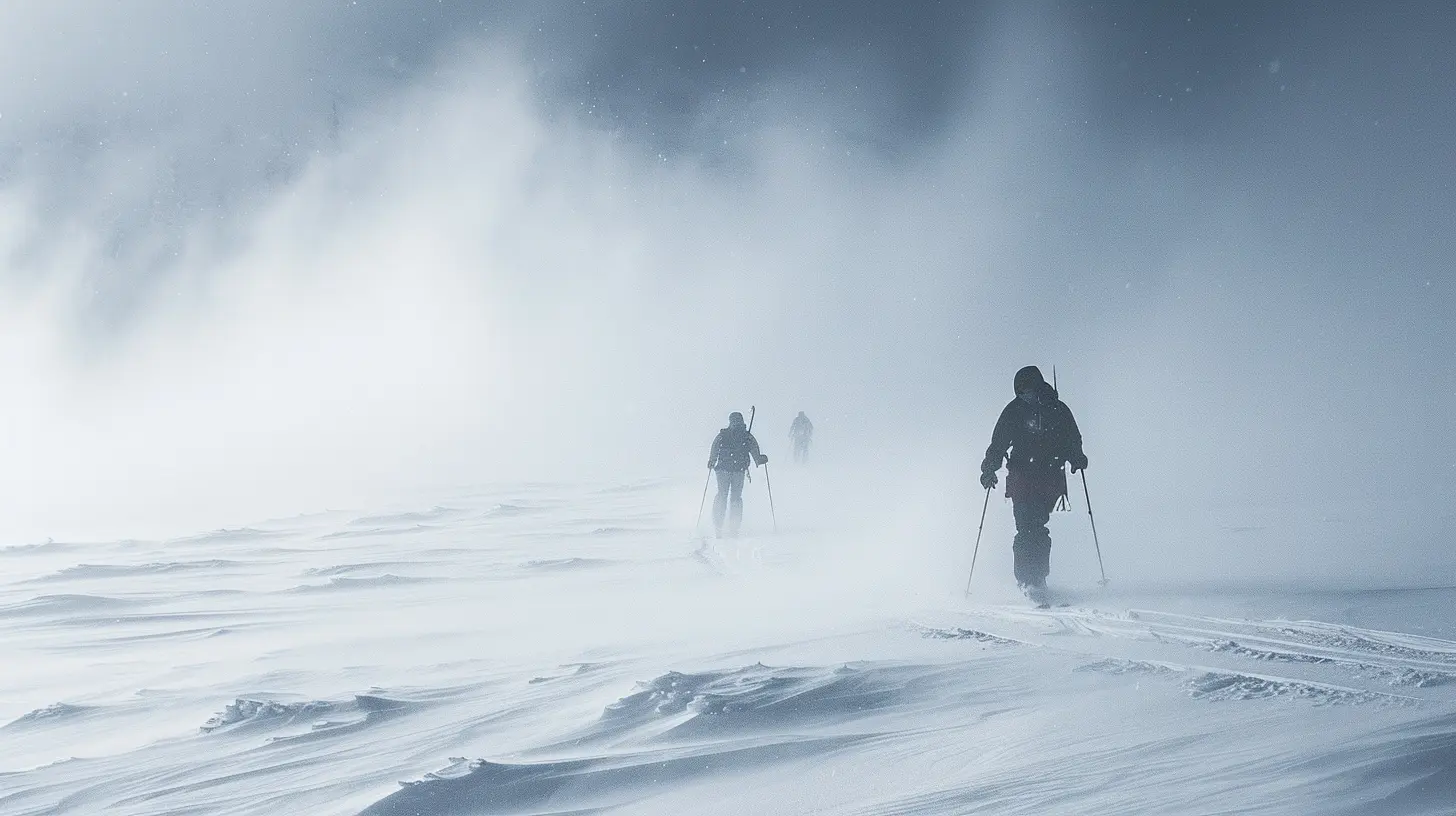
What is Low Visibility in Skiing?
Before we jump into tactics, let's clarify what we mean by "low visibility." Skiing in low visibility typically involves conditions where your ability to see clearly is reduced—think fog, heavy snowfall, or flat light conditions. Flat light, in particular, is when the sky is overcast, and the light becomes diffuse, making the terrain appear completely flat. It’s like trying to ski on a sheet of white paper—super disorienting, right?Low visibility can happen unexpectedly, and it’s crucial to be prepared. These tricky conditions demand extra attention and specific tactics to ensure you stay safe while still having fun.
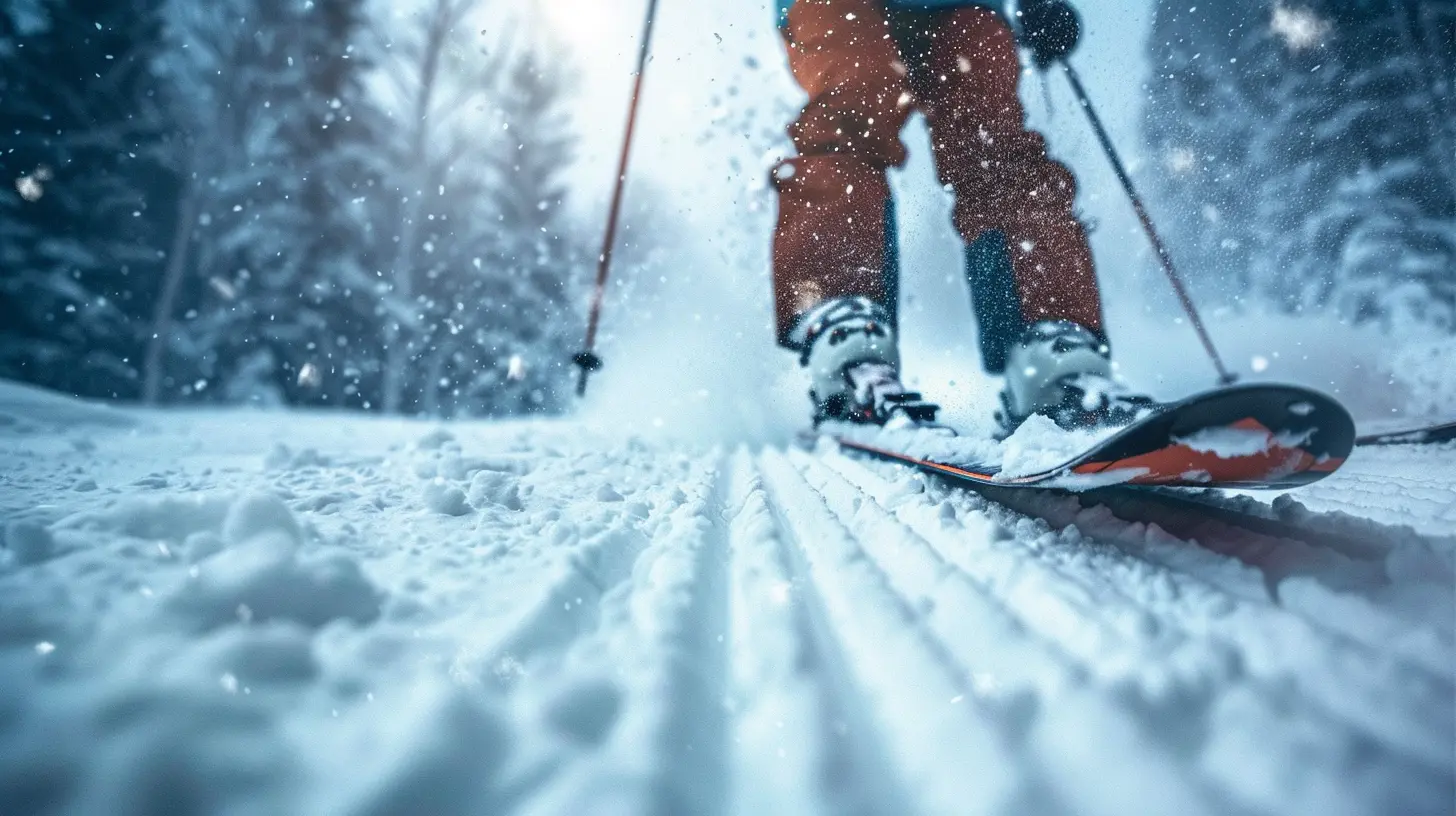
The Challenges of Skiing in Low Visibility
It’s no secret that skiing in poor visibility can feel unsettling. You can’t rely as much on your vision to guide you, and depth perception goes out the window. Here are a few specific challenges you might face:- Reduced Depth Perception: When the light is flat, or there's heavy fog, it becomes difficult to judge the slope, bumps, or dips. You might not see those moguls until you’re on top of them!
- Limited Awareness: With snow or fog swirling around, you may not be able to see other skiers, obstacles, or even the edge of the trail.
- Increased Risk of Fatigue: Skiing in low visibility conditions can mentally drain you faster as your brain works overtime to process what little information it’s getting from your environment.
With that in mind, let’s talk about some tactics that will help you ski confidently even when Mother Nature throws a curveball your way.
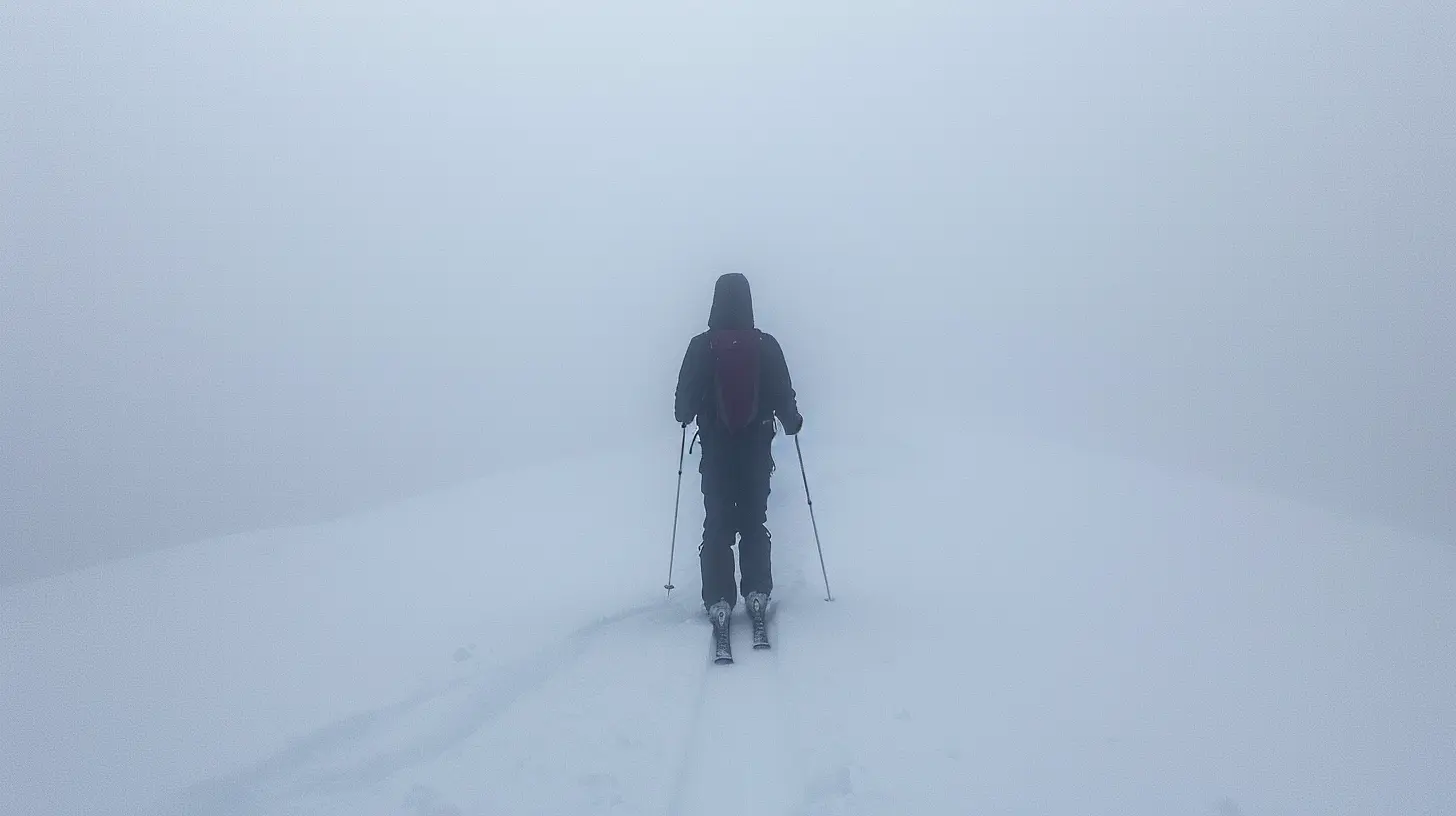
Tactics for Skiing in Low Visibility
1. Choose the Right Goggles
Let’s start with one of the most essential pieces of gear you need: your goggles. In low visibility, having the right lenses can make a world of difference.- Yellow, Gold, or Amber Lenses: These colors are best for low-light conditions. They enhance contrast, making it easier to see bumps, ridges, and other terrain features.
- Photochromic Lenses: These lenses adapt to changing light conditions, darkening when it's bright and lightening up when it's overcast or foggy. They’re a great all-around option, especially if the weather is unpredictable.
- Anti-Fog Coating: Trust me, you don’t want your goggles fogging up when visibility is already low. Make sure your goggles have anti-fog technology or carry some anti-fog spray with you.
2. Stay on Groomed Runs
When visibility is poor, it's not the time to get adventurous. Stick to the groomed runs because they’ll be more predictable. Groomed trails are typically smoother and more consistent, meaning fewer surprises like sudden bumps or drops.Plus, if the visibility gets so bad that you can’t see the trail markers, sticking to familiar, well-groomed runs can help you stay oriented and ensure you don’t accidentally ski off a steep or dangerous area.
3. Follow the Trees
This is one of the oldest tricks in the book—stay close to the treeline! No, I’m not telling you to go tree skiing (unless you’re a pro, that is), but skiing near trees can help you gain some visual contrast.In flat light or fog, wide-open areas can make you feel like you're skiing in a whiteout. The trees offer visual cues and help with depth perception, giving you something to focus on. They also serve as a natural windbreak, reducing the amount of snow blowing into your face.
4. Use Landmarks for Guidance
If you’re familiar with the mountain, use landmarks like lift towers, signs, or rock formations to help guide your way down. These fixed points can ground you and give you a reference, especially when the horizon seems to disappear.In a pinch, follow the trail markers along the side of the run—ski resorts usually place them at regular intervals. Just make sure you’re not the skier who’s too focused on the trees and misses a crucial turn!
5. Slow Down and Shorten Your Turns
This one may seem like common sense, but it's often the hardest to remember when you're caught up in the moment. When visibility is low, slow down. You don’t need to be bombing down the mountain at full speed. In fact, skiing too fast in low visibility is a recipe for disaster.Shorten your turns as well. Short, controlled turns allow you to stay more in control of your speed and reaction time, giving you a better chance to navigate any unexpected obstacles. It’s all about staying in control and skiing within your comfort zone.
6. Keep Your Body Centered
In good visibility, you might shift your weight forward to get more aggressive on your skis. In low visibility, however, it’s better to stay centered over your skis. This gives you more control and helps you react quickly if you hit an unexpected patch of moguls or uneven snow.When you're centered, it’s easier to adjust your stance and balance in case you need to make quick changes to your direction or speed.
7. Ski with a Buddy
When the visibility is low, skiing with a buddy is always a good idea. Not only does it add a layer of safety in case either of you gets into trouble, but it also helps to have someone else’s presence as a reference point in the snow.Take turns leading and following, so you can rely on each other for guidance. Just make sure you keep each other in sight. If it becomes difficult to see your partner, stop and regroup before heading down further.
8. Use Your Poles More
Your ski poles are your best friends when the light is flat, or visibility is limited. Use them to feel out the terrain in front of you, giving you extra feedback about the slope ahead.Planting your poles in regular intervals also helps you keep a rhythm, which is especially useful when you can’t see the terrain clearly. Plus, it’s a great way to maintain balance and control in tricky conditions.
9. Stay Loose and Flexible
It’s easy to tense up when you’re skiing in tough conditions, but stiffening up won’t help. In fact, staying loose and flexible is key. Being able to react to changes in terrain—whether it's an unexpected bump or a patch of icy snow—requires flexibility in your knees, hips, and ankles.Imagine you’re flowing with the mountain rather than fighting against it. The more relaxed and fluid you are, the better you’ll be able to handle any surprises.
10. Take Breaks
Skiing in low visibility conditions is mentally taxing. Your brain is working overtime trying to make sense of the fog, snow, and flat light. Don’t be afraid to take more frequent breaks to rest and recalibrate.Find a safe spot, preferably with good visibility, and give yourself a moment to relax. Not only will this help reduce mental fatigue, but it will also give you a chance to assess the conditions and decide if it’s safe to continue skiing or if it’s time to call it a day.
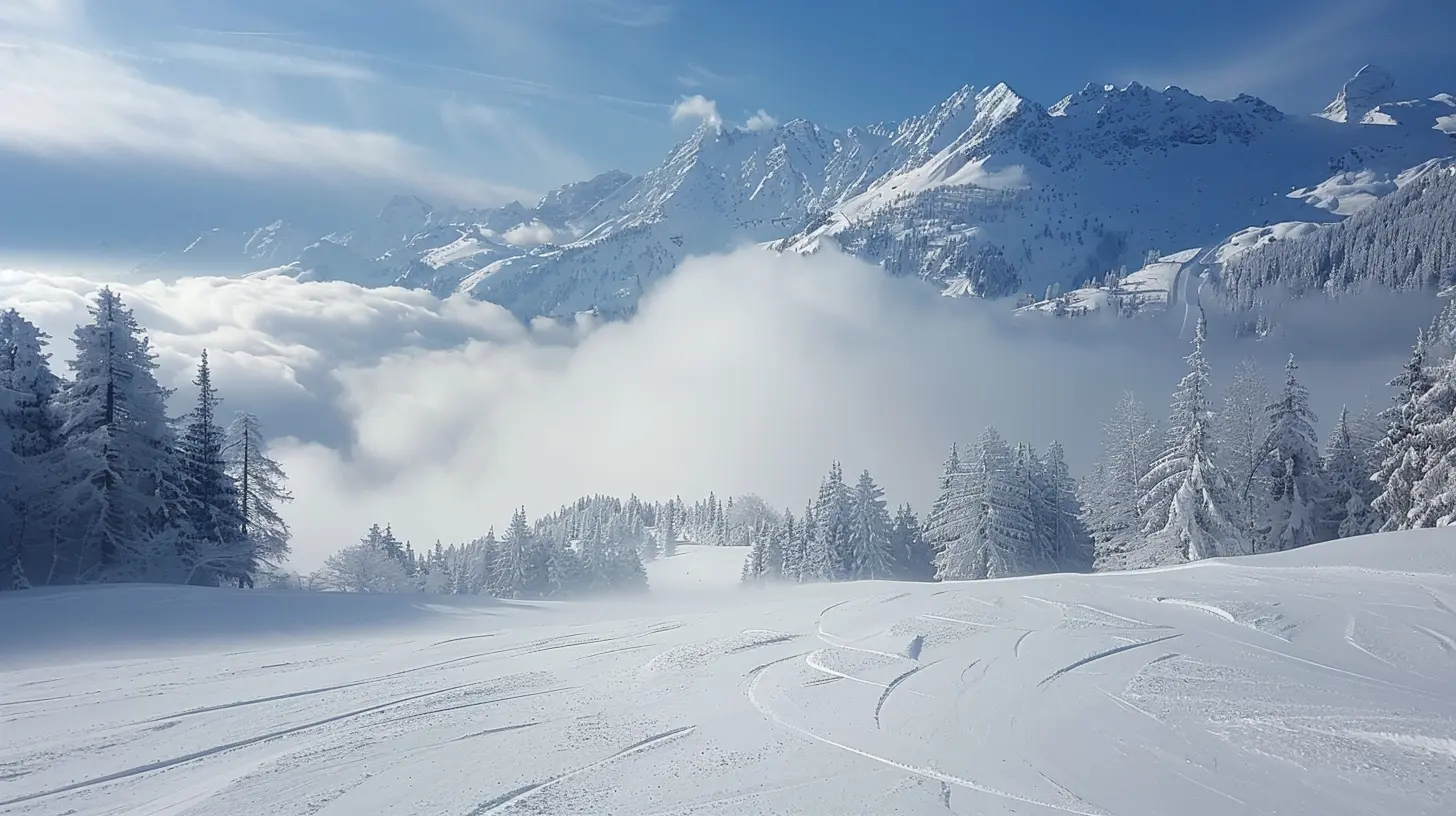
Safety First: When to Call It a Day
No day of skiing is worth risking your safety. If the visibility gets so bad that you can’t see your skis or the next trail marker, it’s time to head indoors. Fog and snow can intensify quickly, and it’s always better to be safe than sorry.If you’re unsure, ask the ski patrollers or staff for advice—they’re trained to keep an eye on the conditions and will let you know if it's better to wait it out or head back down the mountain.
Bonus Tip: Bring a Map or GPS
If you’re skiing at a large resort or unfamiliar mountain, carry a trail map or have a GPS app handy. It’s easy to get turned around when you can’t see landmarks, and having a map will help you stay on course. Some ski apps even offer real-time tracking, so you can see exactly where you are on the mountain.Conclusion
Skiing in low visibility doesn’t have to be terrifying. With the right equipment, mindset, and tactics, you can confidently navigate the slopes even when the weather isn’t cooperating. Remember to stay safe, ski within your limits, and most importantly—have fun! Even in fog or snow, skiing is all about embracing the adventure.all images in this post were generated using AI tools
Category:
SkiingAuthor:

Everett Davis
Discussion
rate this article
17 comments
Rusty Adams
Essential tips for safety!
April 8, 2025 at 10:53 AM

Everett Davis
Thank you! Stay visible, ski with a buddy, and always know your surroundings. Safety first!
Davina Torres
Embrace the challenge of low visibility skiing by focusing on sound techniques—maintain a steady stance, rely on rhythm, and trust your instincts for safety.
March 28, 2025 at 9:22 PM

Everett Davis
Thank you for your insightful comment! Emphasizing sound techniques is crucial for safe skiing in low visibility. Happy skiing!
Valen James
Great tips! Always maintain a slower speed, use sight lines, and trust your instincts. Staying relaxed helps you navigate safely in low visibility.
February 7, 2025 at 4:07 AM

Everett Davis
Thank you! Staying relaxed and trusting your instincts are indeed key for safe navigation in low visibility conditions. Happy skiing!
Marlowe Soto
Skiing in low visibility isn't for the faint-hearted; it’s for the fearless. Embrace the fog and own the mountain! Trust your instincts, keep your speed, and focus on sound over sight. In these challenging conditions, true skiers shine. Don’t shy away—conquer the slopes like the champion you are!
January 30, 2025 at 12:39 PM

Everett Davis
Absolutely! Embracing low visibility can truly elevate your skiing experience. Trusting your instincts and honing your other senses is key. Let’s conquer those foggy slopes together!
Maura McNeely
Great insights! Skiing in fog or snow can be daunting, but your tips on using landmarks and adjusting speed are spot on. I’m curious about how different types of goggles might enhance visibility in these conditions. Any recommendations or personal experiences to share?
January 26, 2025 at 11:32 AM

Everett Davis
Thank you! For low visibility conditions, I recommend using goggles with yellow or rose-tinted lenses, as they enhance contrast and depth perception. Anti-fog features are also crucial. Personally, I’ve found that high-contrast lenses make a noticeable difference in navigating fog and snow.
Jacqueline McGlynn
Embrace the challenge, conquer!
January 21, 2025 at 7:48 PM

Everett Davis
Absolutely! Embracing the challenge is key to improving your skills, especially in tough conditions. Keep pushing forward!
Stephen Rhodes
Embrace the fog and let your inner snow adventurer shine! Skiing in low visibility may seem daunting, but with the right tactics, you’ll be gliding like a pro. Remember, even the most experienced skiers have had their share of snowy surprises. Stay safe, have fun, and enjoy the unique thrill of the unknown!
January 20, 2025 at 12:21 PM

Everett Davis
Thank you for your encouraging words! Embracing the challenge of skiing in low visibility can truly enhance the adventure. Safety and enjoyment are key—happy skiing!
Dakota McAdams
Trust your instincts, adapt.
January 19, 2025 at 9:42 PM

Everett Davis
Absolutely! Trusting your instincts and being adaptable are key for navigating challenging conditions on the slopes. Stay safe and enjoy skiing!
Zara McLemore
Embrace the challenge, visibility won't stop your spirit!
January 18, 2025 at 7:33 PM

Everett Davis
Absolutely! Embracing the challenge can enhance your skills and confidence on the slopes, even in tough conditions. Keep pushing forward!
Sabina Bishop
Embrace the challenge, soar!
January 17, 2025 at 9:43 PM

Everett Davis
Thank you! Embracing challenges is key to improving your skills, especially in tough conditions. Stay safe and have fun on the slopes!
Orion Lawrence
Great tips for skiing in low visibility! Remember to maintain a steady speed, use your edges for better control, and keep your head up to anticipate terrain changes. Trusting your instincts can help keep you safe and confident on the slopes.
January 16, 2025 at 9:21 PM

Everett Davis
Thank you! Those are excellent reminders for staying safe and confident in challenging conditions. Happy skiing!
Emory Wilkins
Great tips! Skiing in low visibility can be challenging, but safety comes first.
January 16, 2025 at 1:42 PM

Everett Davis
Thank you! Safety is indeed the top priority when skiing in challenging conditions. Glad you found the tips helpful!
Zanya McWhorter
Navigating low visibility requires not just technique but mental resilience. Emphasizing slow, deliberate movements and trusting instincts can transform a daunting challenge into an enjoyable adventure.
January 16, 2025 at 4:12 AM

Everett Davis
Absolutely! Embracing a slow, focused approach and trusting your instincts can truly enhance the skiing experience in low visibility conditions. Thanks for highlighting this important aspect!
Beau McDaniel
Who needs vision? Just wing it, right?
January 15, 2025 at 4:00 AM

Everett Davis
While improvisation can be thrilling, having a clear strategy for skiing in low visibility is essential for safety and enjoyment. Plan ahead, stay aware, and ski smart!
Beatrice Lopez
Stay patient, focus on technique, trust your instincts!
January 14, 2025 at 11:36 AM

Everett Davis
Thank you! Great advice—patience and technique are key in challenging conditions.
Kristina McIntyre
Thank you for sharing these helpful tips! Skiing in low visibility can be daunting, but your advice makes it feel more manageable. I can’t wait to put these tactics into practice on my next foggy adventure. Stay safe out there!
January 12, 2025 at 9:11 PM

Everett Davis
You're welcome! I'm glad you found the tips helpful. Enjoy your skiing and stay safe!
Raine McConnell
Interesting tips! How do experienced skiers adapt their techniques differently in low visibility compared to clear days?
January 12, 2025 at 12:43 PM

Everett Davis
Experienced skiers focus on maintaining balance and rhythm, rely on sound and feel rather than sight, and often use shorter turns to enhance control. They also adjust their speed and keep an eye on their surroundings to navigate safely in low visibility conditions.
MORE POSTS

How to Set Realistic Fitness Goals and Stick to Them

How College Sports Are Adapting to Climate Challenges

Cardio for CrossFitters: Increasing Endurance for WODs

All Eyes on the Star Player: How He Could Swing the Game

Strength Training for Endurance Athletes: Why It’s Essential
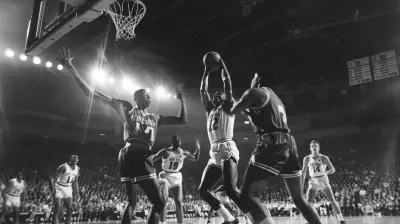
The History of March Madness and Its Cultural Impact

Strength Training for Fat Loss: Myths vs. Reality

The Role of Nutrition in an MMA Fighter’s Success

How to Plan the Perfect Cycling Vacation

How to Manage Time and Balance Cycling with a Busy Schedule

Outclassed and Outfought: A One-Sided Contest